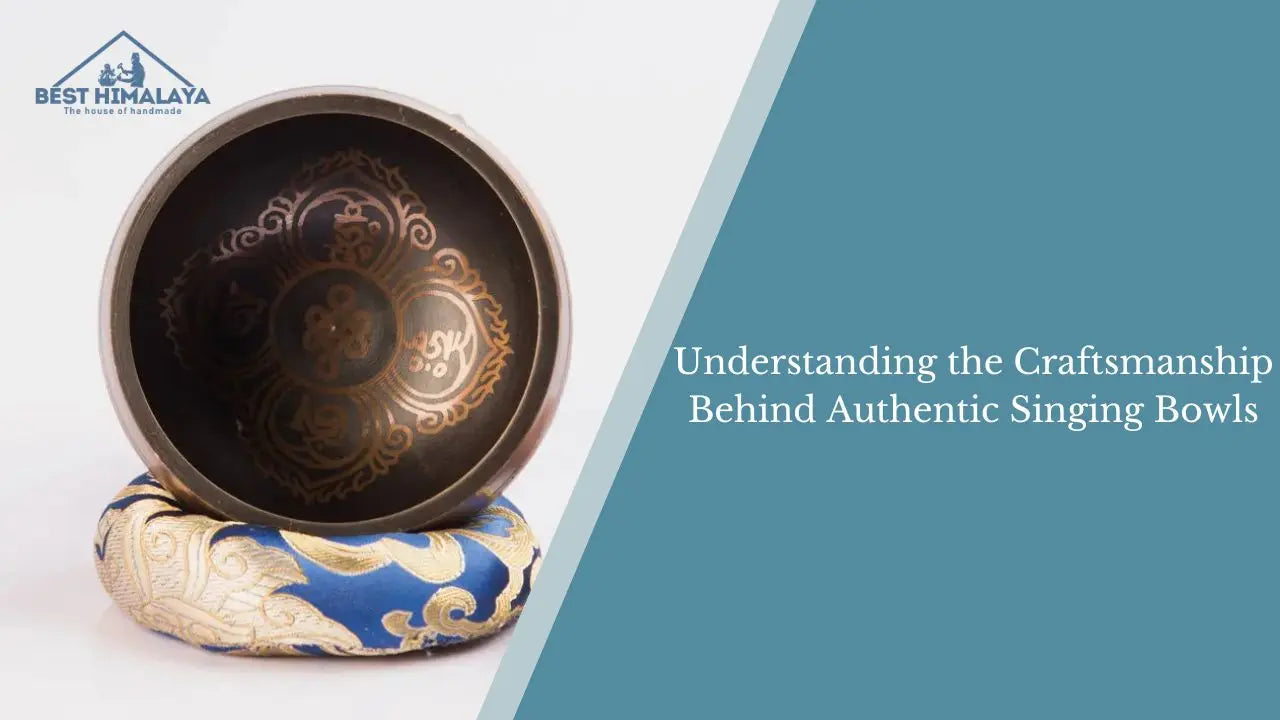People have been using singing bowls for centuries to practice meditation, healing, and spiritual rituals. Singing bowls help calm the mind to bring inner peace with the help of deep and resonating sounds. However, every singing bowl is not the same. It’s because the quality of the sound and energy they produce depends heavily on how they are made. In this blog, we will explore everything about the craftsmanship behind authentic singing bowls and how to identify an authentic one.
What Makes a Singing Bowl Authentic?
For generations, authentic singing bowls have been handcrafted using ancient methods. This means that these bowls are not machine-made in factories. Instead, skilled artisans use a mix of metals and precise techniques to shape the bowls by hand, and this approach takes years to master. The popular regions that make singing bowls are Nepal, India, and Tibet. Moreover, monks, healers, and meditation practitioners use antique Himalayan singing bowls due to their ability to create harmonious tones. It is commonly believed that these tones can balance energy, reduce stress, and support meditation.
Hand-Hammering For Perfection
The traditional method of shaping a singing bowl is Hand-hammering. A molten alloy is created after melting and mixing the metals. Then it is poured into a mold to make a disc-like structure. This disc is then hammered by the hands of experts into the shape of a bowl. This entire process is done slowly and carefully by a team of artisans who work together. Every singing must be processed through many rounds of hammering and heating. This gives it the correct shape and strengthens the structure. Similarly, the hammer marks that appear on the surface are evidence of the handcrafting process. These marks prove that the bowl was made with patience and skill. The machine-made bowls look smooth, but they lack the richness and elegance of hand-hammered bowls.
Importance of Testing
Making a singing bowl involves shaping the metal and tuning the bowl to ensure the right sound. In this process, the bowl is struck multiple times by skilled makers for testing purposes. These craftsmen listen to the pitch, vibration, and tone of the singing bowls. It’s because every authentic bowl has a fundamental tone with several overtones. These tones are the reason behind the healing quality of the bowl. A well-tuned singing bowl must create vibrations that touch your entire body, along with your ears. In traditional workshops, the bowl is struck with different mallets or rubbed with a wooden or leather-wrapped stick for testing. This helps test the entire range of sounds the bowl can produce.
Size and Shape are Essential
Singing bowls are available in various sizes, ranging from a small one that fits in your palm to large singing bowls that are kept on the floor. Moreover, the bowl’s size and thickness determine its sound. For higher-pitched tones, smaller bowls are used, while larger ones create deeper vibrations. Also, the shape affects how the sound waves move through the metal. Some singing bowls are wide and shallow, others are deep and narrow. Apart from the looks, the shape plays a role in how the bowl vibrates and how long the sound lasts. When crafting a bowl, artisans consider all these factors. They want to create a balanced instrument that sounds beautiful, feels good, and resonates with both the body and mind.
The Right Finish and Engraving
Many authentic singing bowls have a natural and raw finish. On the other hand, others can be polished or engraved with sacred symbols or deities. These decorations have cultural or spiritual meaning and are carried out by hand. For example, a bowl can have the Om Mani Padme Hum mantra, which is common in Tibetan Buddhism. These designs are usually carved into the metal with the help of traditional tools. Apart from a decorative purpose, these details enhance the bowl’s spiritual energy. However, not all engraved bowls are authentic. A large number of factory-made bowls can have mass-produced engravings. An experienced professional can easily differentiate between the details of a handmade or factory-made singing bowl.
Modern vs. Traditional Singing Bowls
Factory-made modern singing bowls may be cheaper and easier to find, but they do not have the depth of sound and craftsmanship of traditional singing bowls. It’s because they are made from a single type of metal with the help of machines. On the other hand, traditional bowls take days or even weeks to create. These bowls carry the energy of the artisan who made them and the culture they come from. This is the reason why sound healers and meditation practitioners prefer traditional bowls.
How Can You Identify an Authentic Singing Bowl
You must check for the following signs to know if a singing bowl is authentic:
-
Look for hammer marks or slight imperfections that indicate hand-hammering.
-
Ask about the metal composition because authentic bowls have a mixture of metals.
-
Listen to the sound as a real bowl has clear tones with natural overtones.
-
Check for hand-engraved cultural symbols or mantras.
-
Buy from Best Himalaya because we work directly with artisans.
The Takeaway
The beauty of a singing bowl is evident in the skill, time, and intention used to make it. Apart from being musical instruments, they are sacred tools that are shaped by centuries of tradition. You bring cultural heritage, spiritual depth, and healing energy when you choose a handmade, well-crafted singing bowl. No matter if you use it for meditation, relaxation, or to enjoy its sound, understanding the craftsmanship behind authentic singing bowls is a must

